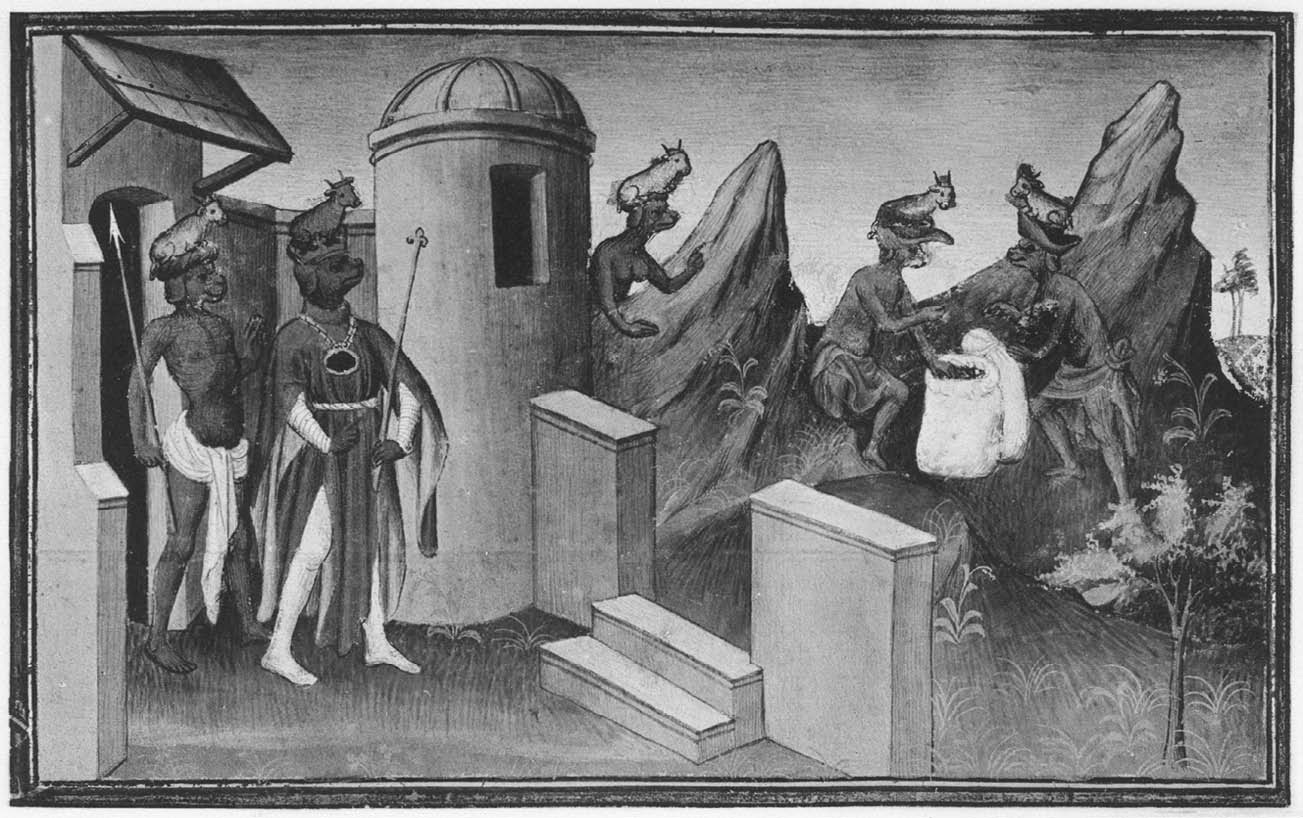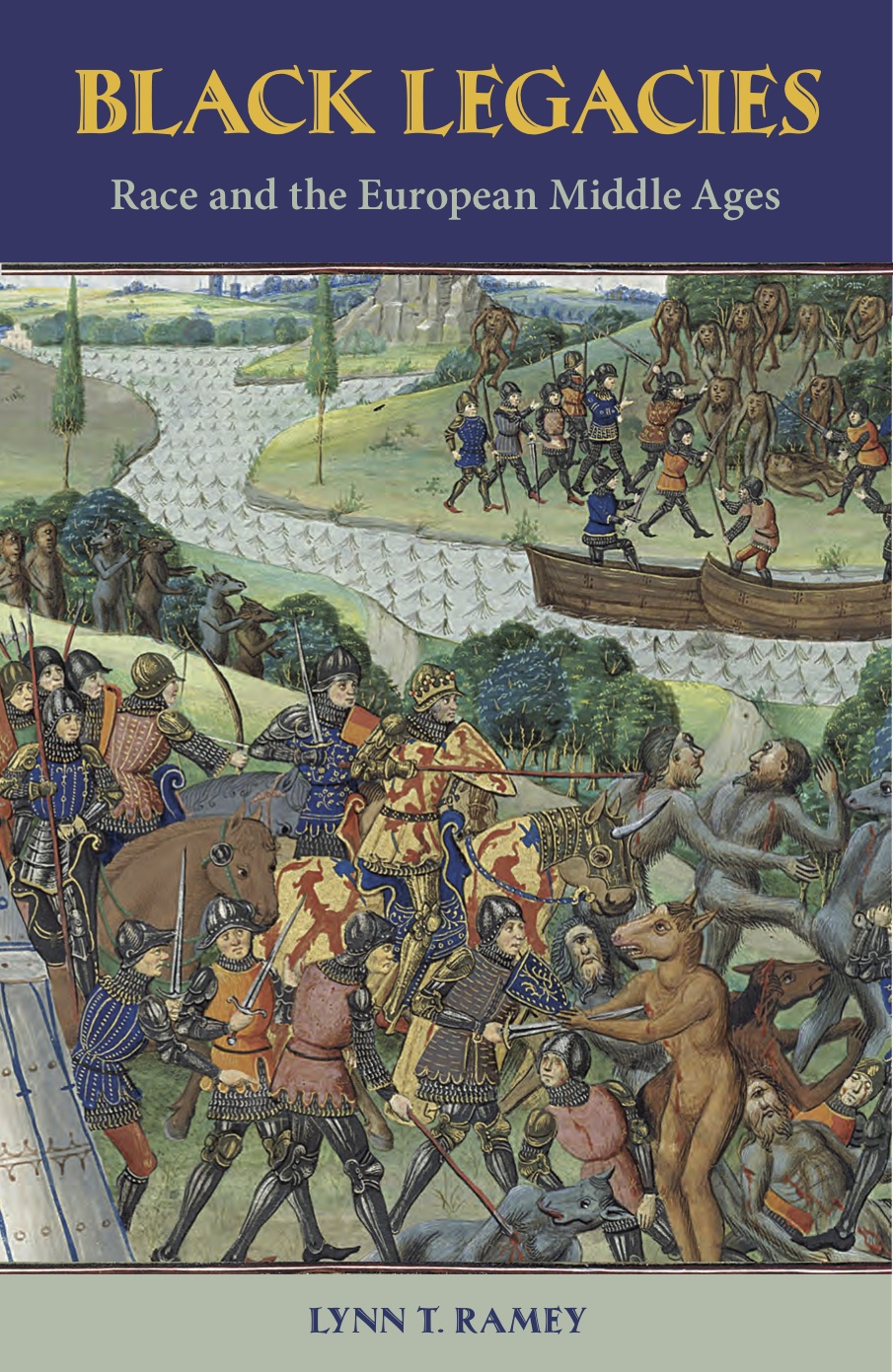By Lynn Ramey (Guest Contributor)
From early on, travelers reported seeing “races” of men that were later referred to as the “monstrous races,” one of the most unusual being men who looked normal except for having a dog’s head. In Natural History, Pliny the Elder (d. 79) catalogues forty-odd peoples with attributes from cannibalism to excessive hairiness, from those sporting a dog’s head (cynocephali) to those with no discernable head, just eyes and a mouth in their chests. For Pliny, these were simply marvelous peoples, but remained part of humankind.
 In the early medieval era, Augustine (d. 386) raises the problem in the City of God using Pliny’s catalog of the monstrous races, but he adds the Christian concern: how do the monstrous races fit into God’s plans for mankind? Later, Bartholomew the Englishman (d. 1272) (who as far as we know never actually travelled) notes several types of monstrous men, including cave-dwelling troglodytes, cynocephali, and the headless blemmye, with eyes in their chests. Tellingly, Bartholomew includes the monstrous men twice in his encyclopedia, once under the categories of men and again under the rubric of animals, as if he is no longer sure of their humanness. Odoric of Pordenone, an Italian Franciscan monk travelled between 1317 and 1330 for the purpose of converting those he encountered. At the island of Nicoveran, he reports on people who are dog-faced, the cynocephali. He notes that they worship oxen and wear a gold or silver ox on their forehead in honor of their god. Odoric clearly considers these to be people capable of religious belief, albeit odd, but he finds other marvelous races that he deems to be inhuman.
In the early medieval era, Augustine (d. 386) raises the problem in the City of God using Pliny’s catalog of the monstrous races, but he adds the Christian concern: how do the monstrous races fit into God’s plans for mankind? Later, Bartholomew the Englishman (d. 1272) (who as far as we know never actually travelled) notes several types of monstrous men, including cave-dwelling troglodytes, cynocephali, and the headless blemmye, with eyes in their chests. Tellingly, Bartholomew includes the monstrous men twice in his encyclopedia, once under the categories of men and again under the rubric of animals, as if he is no longer sure of their humanness. Odoric of Pordenone, an Italian Franciscan monk travelled between 1317 and 1330 for the purpose of converting those he encountered. At the island of Nicoveran, he reports on people who are dog-faced, the cynocephali. He notes that they worship oxen and wear a gold or silver ox on their forehead in honor of their god. Odoric clearly considers these to be people capable of religious belief, albeit odd, but he finds other marvelous races that he deems to be inhuman.
As explorers travelled to the New World, they took their questions about humanness with them. In the first example of an explicitly New World map (1513), the Ottoman admiral and cartographer Piri Reis shows dog-headed people and blemmye in South America. Like the dog-headed people in Odoric’s medieval account, these dog-men appear to possess some degree of culture, often linked to the ability to reason, as they dance in the margins of the map. However, writing on the map specifically states that the indigenous peoples of South America are animals, with no culture or reason.
Sadly, by the 16th century the monstrous races are no longer cute and marvelous, but they have become linked with real peoples. Having judged these races and peoples to be without reason, the stage has been set for exploitation of New World resources and its inhabitants.
 Lynn Ramey is Associate Professor of French at Vanderbilt University. Her research centers on contact between pre-modern cultures via trade, travel, or conquest. Her newest book Black Legacies: Race and the European Middle Ages explores how attitudes and practices in Europe’s Middle Ages contributed to the western concept of race.
Lynn Ramey is Associate Professor of French at Vanderbilt University. Her research centers on contact between pre-modern cultures via trade, travel, or conquest. Her newest book Black Legacies: Race and the European Middle Ages explores how attitudes and practices in Europe’s Middle Ages contributed to the western concept of race.
